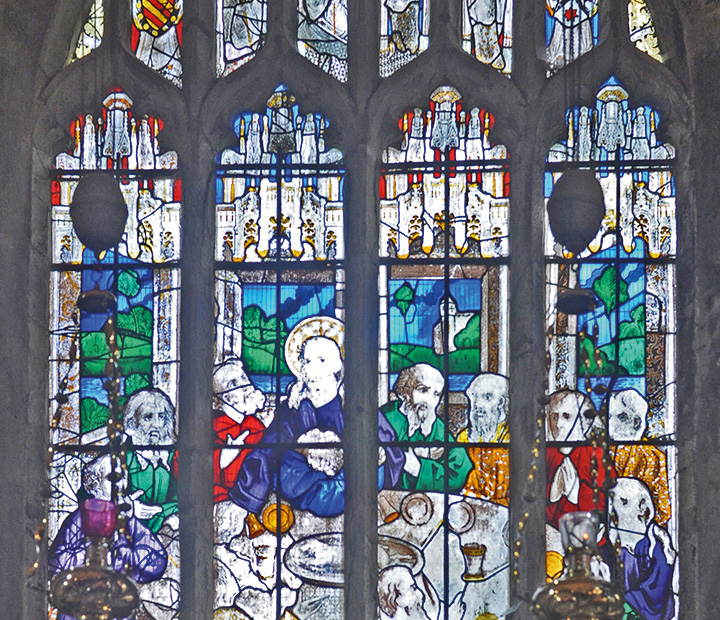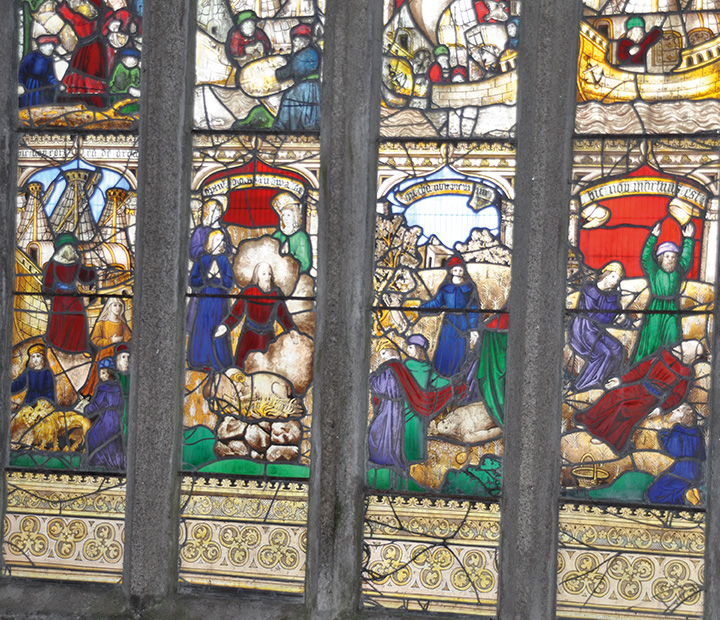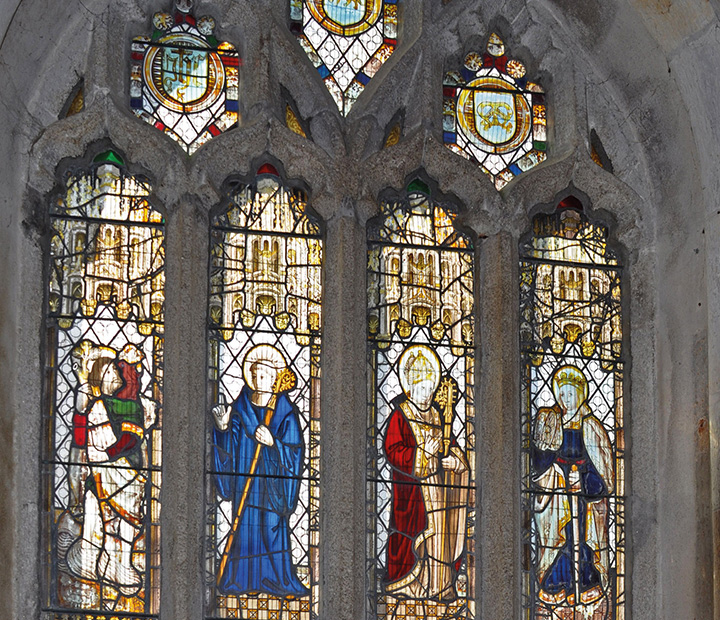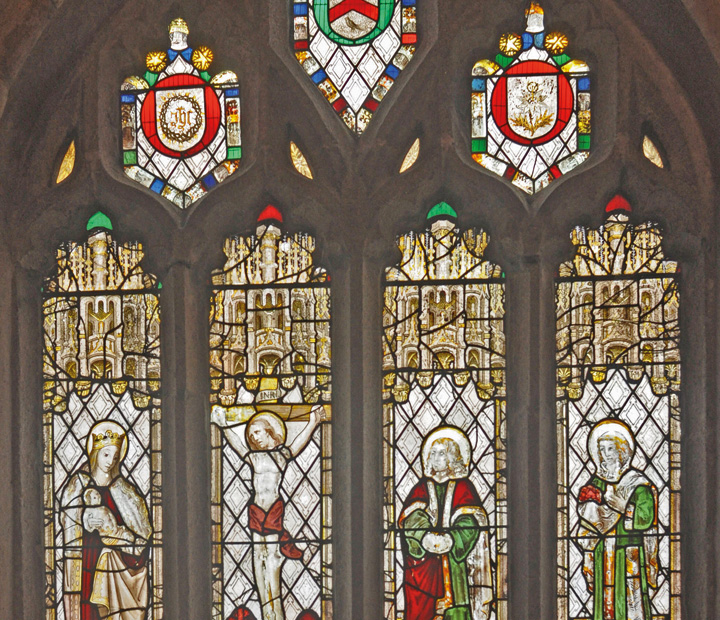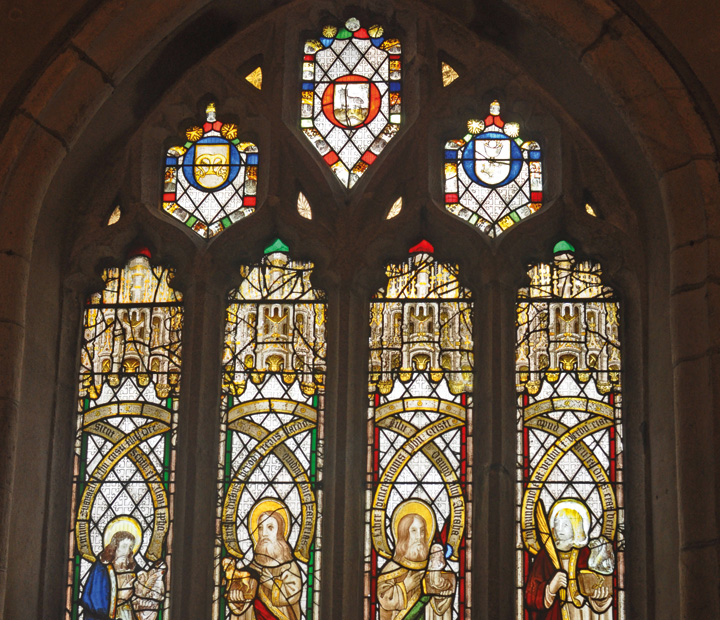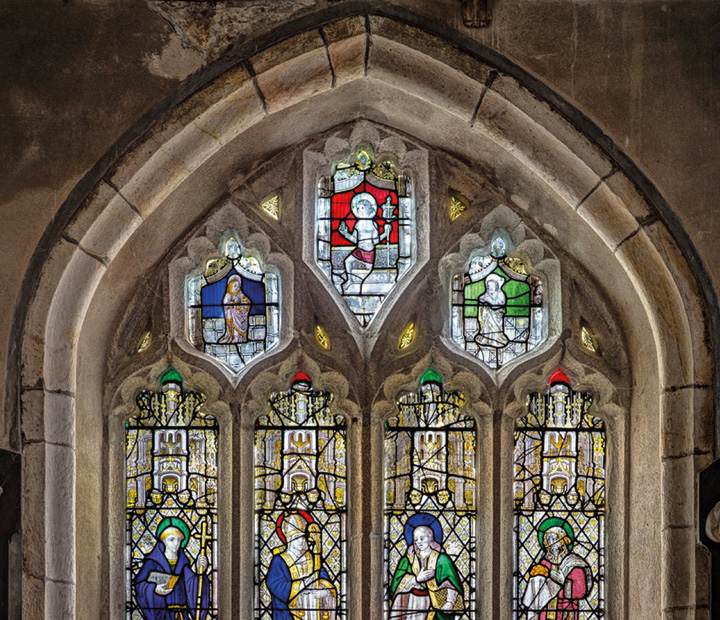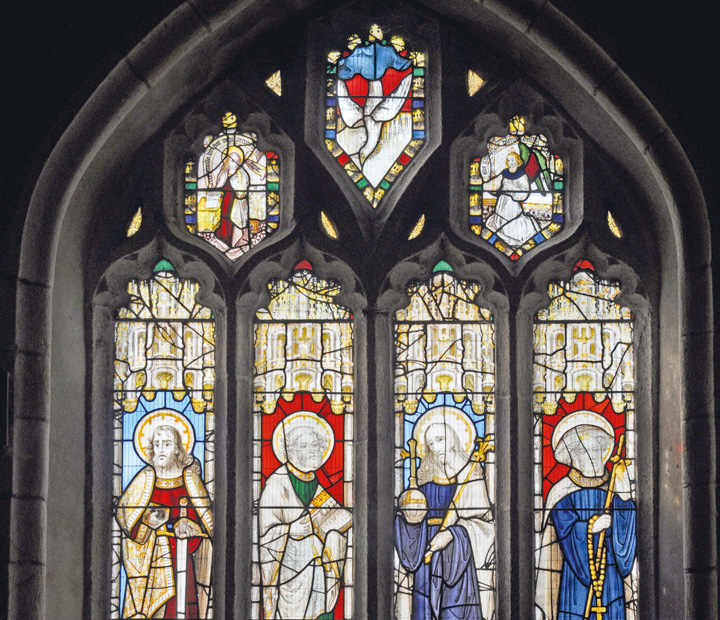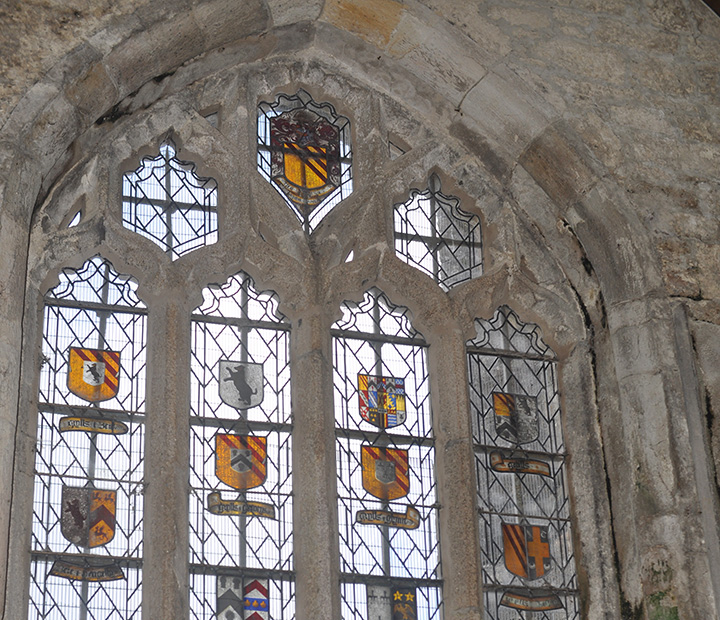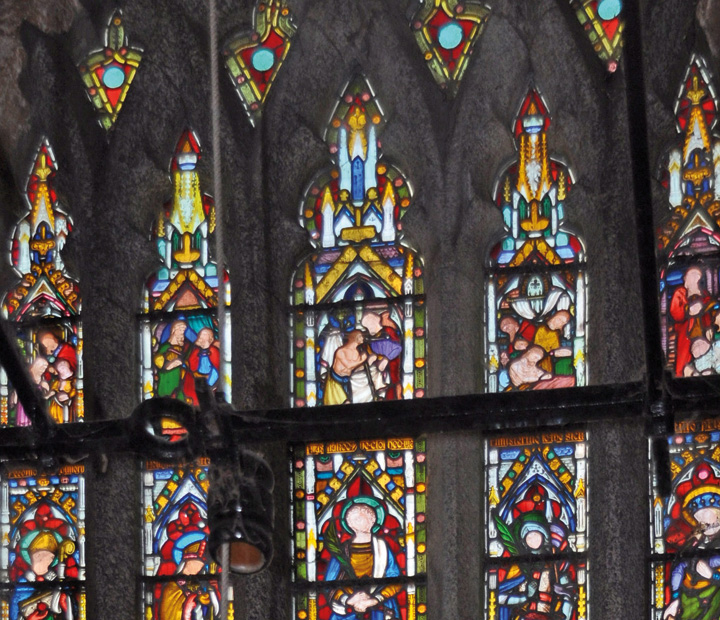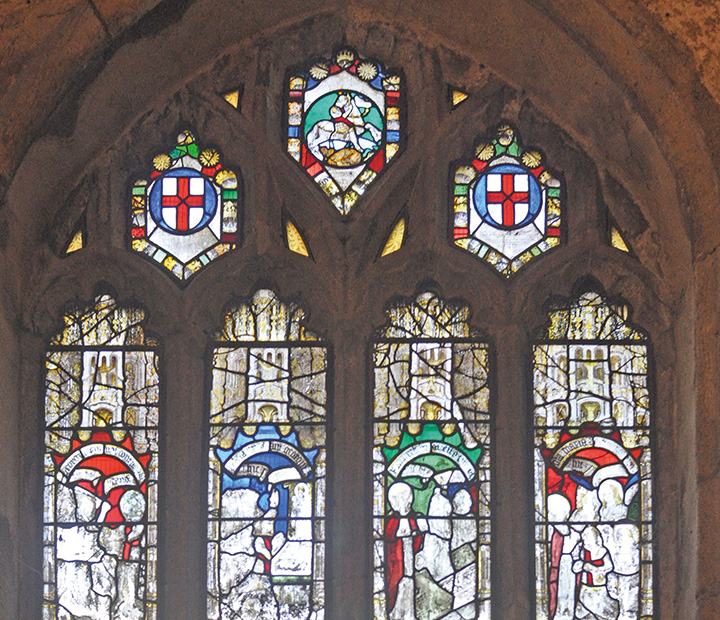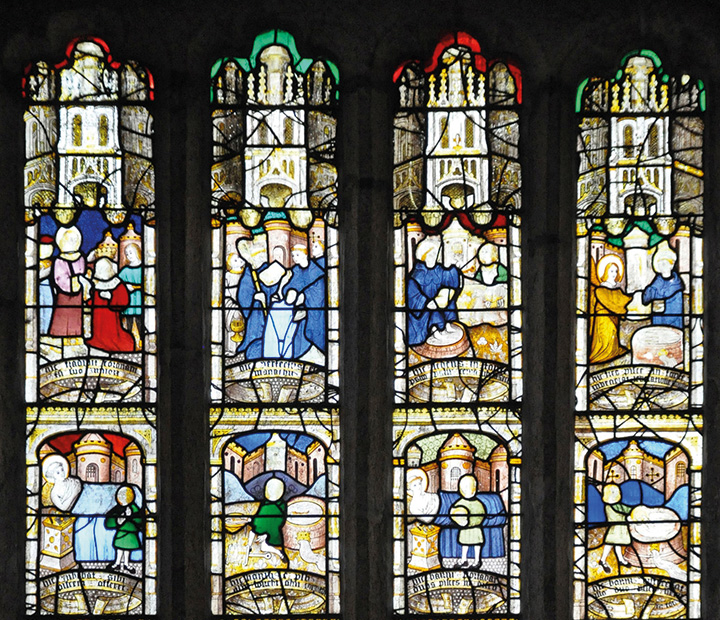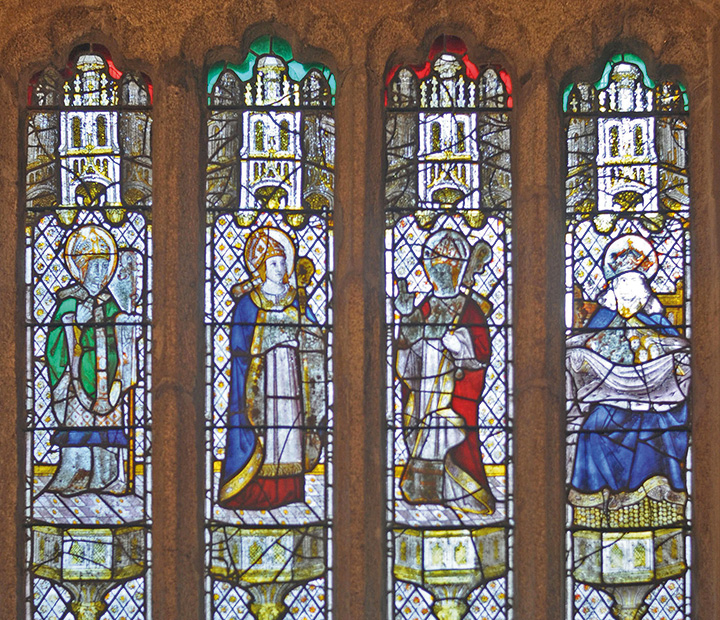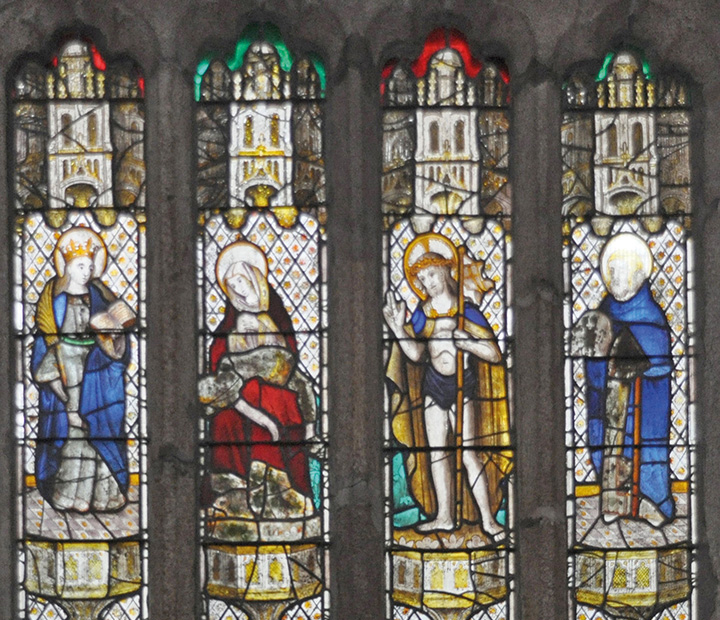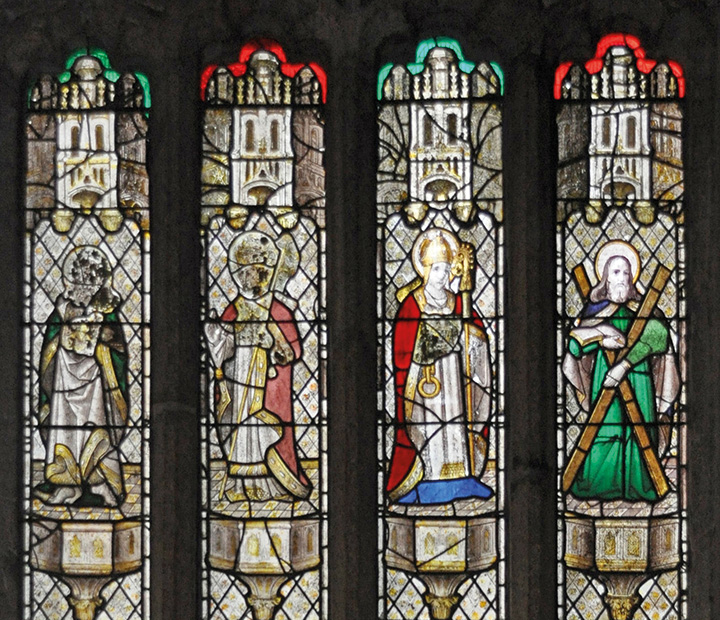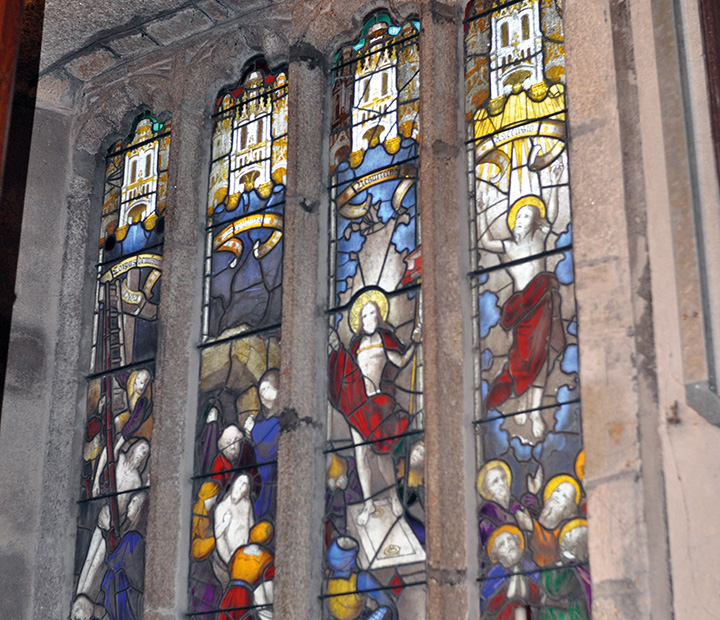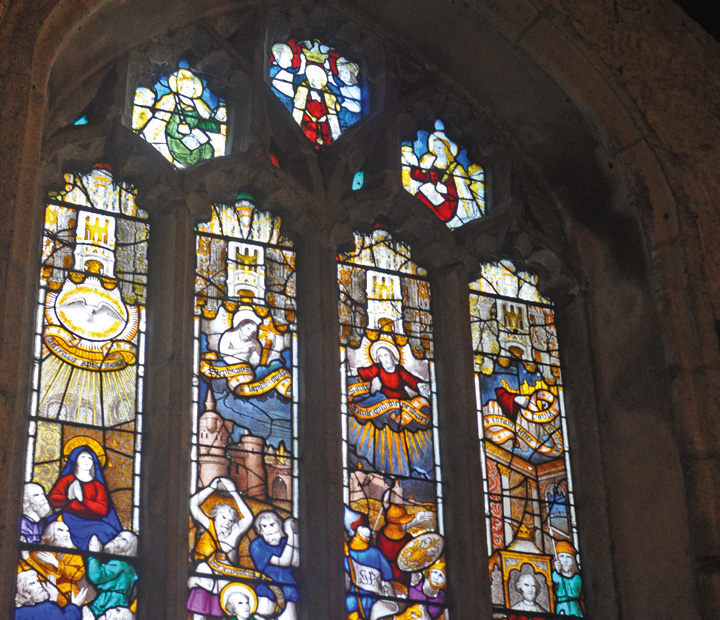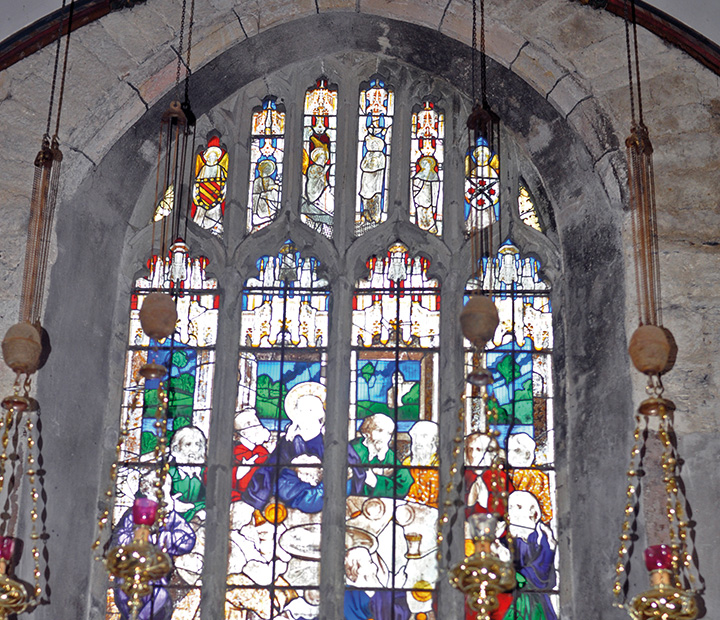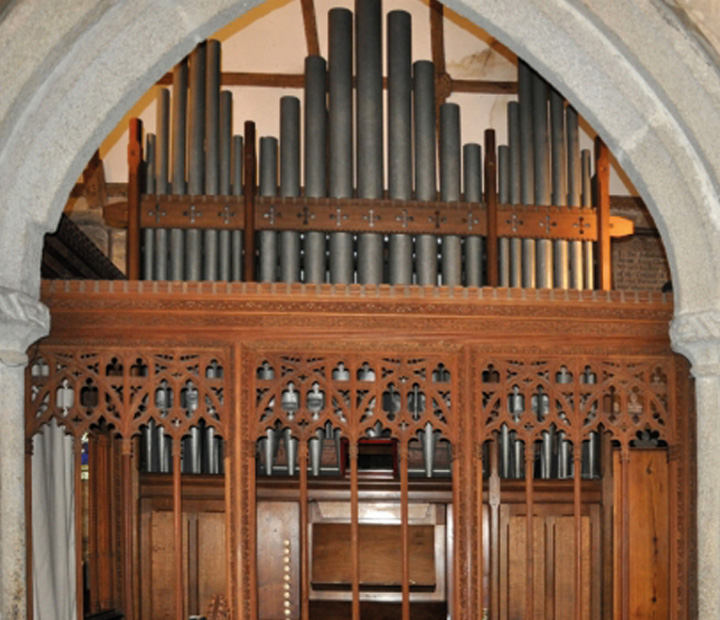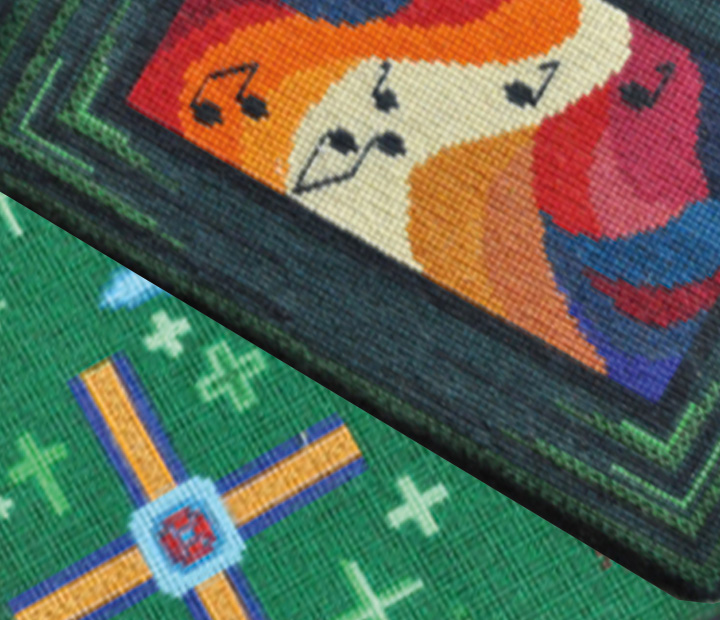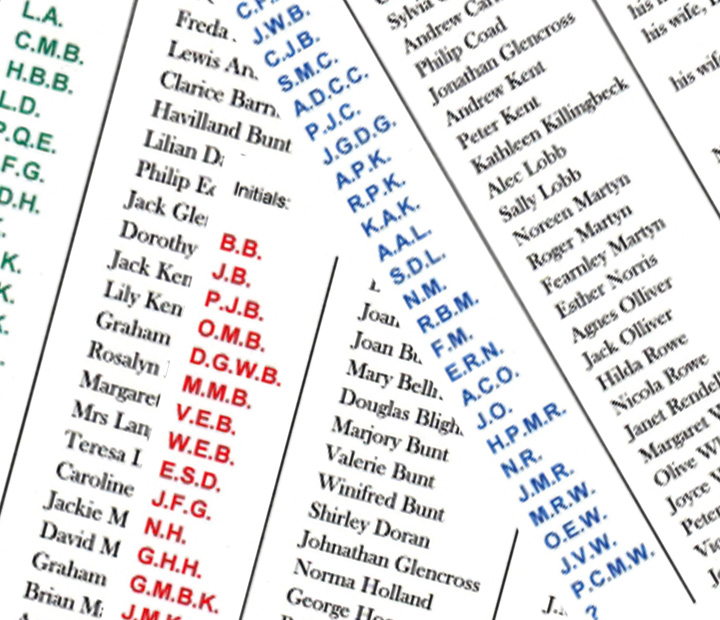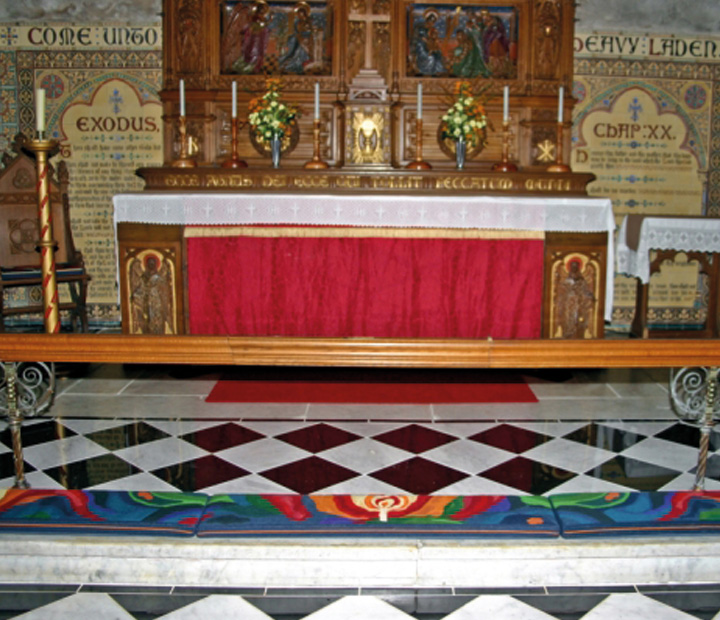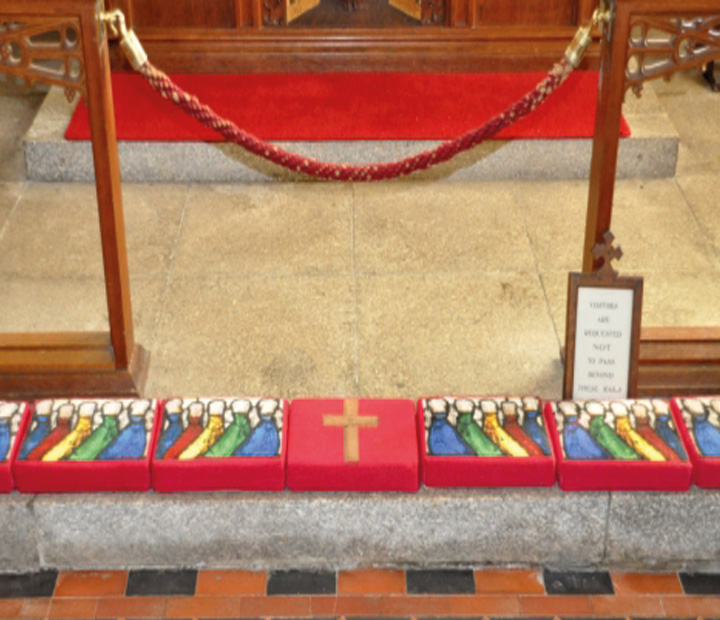St. Neot Church Windows
The Creation Window
The creation window is one of the earliest, finest, and least restored windows. Rev Richard Gervys Grylls patron of the living in 1825, was concerned with the poor state of the glass and entrusted the restoration of the windows to John Hedgeland.
The Noah Window
In the Noah window one can see Hedgeland's work, inserted where the medieval glass had disappeared. This is particularly clear in the tracery or window head and in the bases of the window lights, where the differences between the medieval and 19th century styles can be appreciated.
The Motton / Mutton Window
Rushforth refers to this as the Evangelist window.
The Callaway Window
There are a number of different ways of spelling this name ie. Callwy, Callwy, Callawy etc.
The Memorial Window
This is also sometimes called the Grylls Window. Rushforth entitles this window the "Eighth Window".
The Grylls Window (Church Tower)
This window was donated after the Rushforth description was written.
The Acts Window
This is a modern window created largely by Hedgeland in 1830.
The Church Organ
This was built in 1884 by “Father” Willis, the most distinguished of all organ builders in the 19th century and responsible for the vast majority of cathedral organs in the country. It is very similar to two other Willis organs in the county, one at Cubert and the other at Breague, both of which started out as house organs.
In all probability, the St Neot instrument began its life in a country house near Henley-on-Thames and owned by the Hermon family. They had made their money out of cotton manufacturing and the organ, clearly marked with the name of the house, could well have graced one of the stately rooms.
"Built in 1884 by 'Father' Willis, the most distinguished of all organ builders in the 19th century"
George Hermon
A son, George Hermon, became curate at St Neot in the 1880s and in 1896 the vicar of the parish. He lived with his wife in some splendour at Doublebois House near Liskeard. There were often ten servants in attendance along with Poo Poo his beloved black poodle. A chain smoker, he had an artistic bent and had built a theatre/concert room in the grounds. He was, however, very generous to the parish and gave the clock in the tower, the lectern, magnificent teak screen as well as the organ in the north aisle.
The Lectern
The instrument is typical of Willis: well-built with that glorious tone for which he was so famous. There is a fine diapason on the great, a beautiful claribel flute and a clarinet which was often a feature of his smaller organs. The cornopean, much favoured by this builder, is on the swell along with the restful strings. Like the instrument in Truro cathedral, it is not large in size but its tone makes it one of the glories of this most beautiful Cornish building. George Hermon rests just outside the north aisle, having died at the age of 59 almost 100 years ago. I like to think that he can still hear the sounds of his instrument when I am playing each Sunday, music played to the glory of God week by week.
Kneelers in the Church
The kneelers were produced between 1981 and 1986 by parishioners and people associated with our Church. Many of the people had no previous experience of tapestry work. Two of the "stitching team" were men.
The Design
The design was intentionally kept simple so that it didn't detract from the beauty of the medieval painted and stained glass windows. The three colours used for the kneelers were the dominant colours in the windows. Red and green being Liturgical colours and blue representing the Madonna.
The kneelers in the Chapel of All Souls reflect the three colours used plus the rich purple and gold of the Noah window. Green for the background accords with the Creation. A pair of kneelers in the Chancel was made for use at Confirmations, with the design of the ascending Dove representing the Holy Spirit. The initials on the kneelers signify either the worker or donor, or in some cases the person in whose memory it was given.
The Altar-Rail Kneelers
The Altar-rail kneelers (pictured below) were given by Major & Mrs Keeble in memory of their son who had recently died. The Kneelers is made of five parts each 4 feet wide. The design, which is modern, runs across the whole. There is a candle, each slightly different, on each section which complements the candle on the Bishop's Chair, it represents the Light of the Spirit. The colours are brilliant to reflect the colours in the great East Window.
Dangar Chapel Kneelers
The above kneelers were made by St Neot parishioners from a design adapted from the bottom panel of the Young Women's Window in our Church. The design has been altered to show the women praying towards the centre kneeler which is a golden cross. These were given by William Taylor in memory of his mother.


